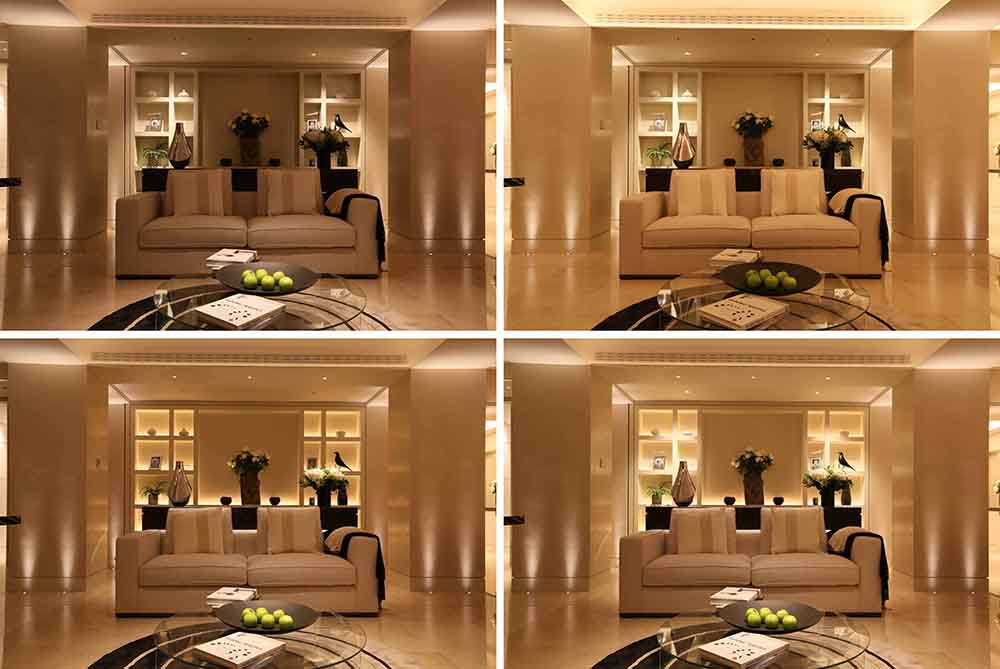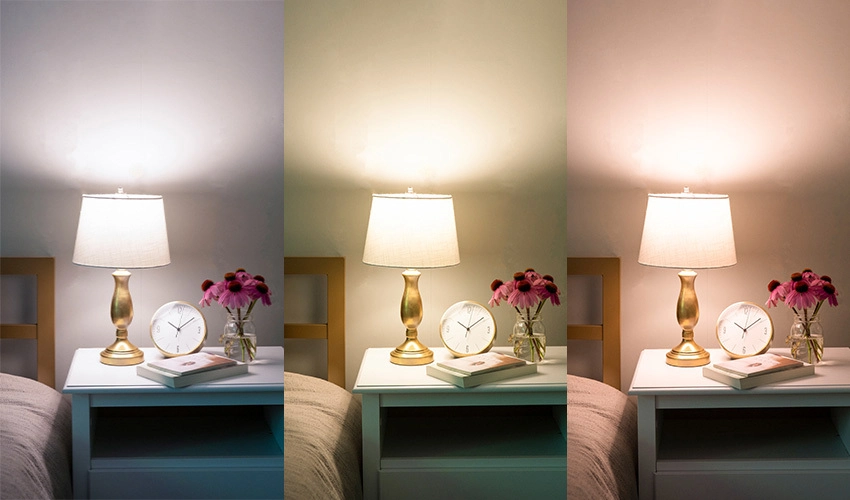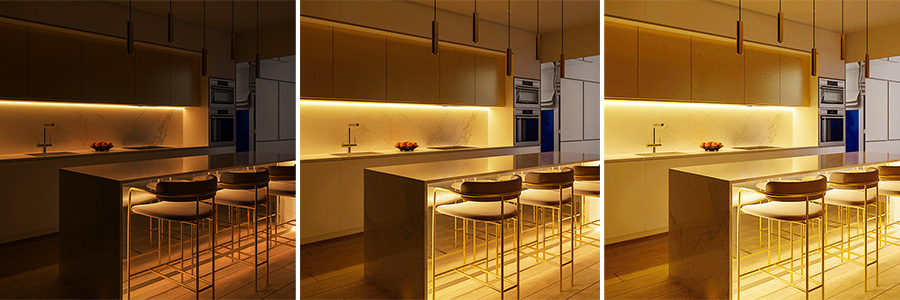In the realm of interior design, lighting plays a pivotal role in shaping the ambiance and atmosphere of a space. Layered lighting, a concept that combines different types of lighting sources, has emerged as a powerful tool for creating a harmonious and inviting environment. By understanding the principles of layered lighting, we can transform ordinary spaces into captivating sanctuaries that evoke a sense of warmth, comfort, and style.

The importance of layered lighting in creating ambiance:
Ambiance is the essence of a well-designed space, and layered lighting is the key to achieving it. A single light source often fails to provide the depth and dimension necessary for a truly captivating atmosphere. Layered lighting, on the other hand, allows us to control the mood, highlight architectural features, and create a sense of balance and harmony within a room.
Different types of lighting for different purposes:
The beauty of layered lighting lies in its ability to combine various lighting sources, each serving a specific purpose. Ambient lighting, such as ceiling fixtures or recessed lights, provides overall illumination and sets the foundation for the space. Task lighting, like desk lamps or under-cabinet lights, ensures adequate brightness for specific activities. Accent lighting, including wall sconces or track lighting, draws attention to artwork, architectural details, or focal points. Finally, decorative lighting, such as chandeliers or pendant lights, adds a touch of elegance and sophistication.

Choosing the right fixtures for layered lighting:
Selecting the appropriate fixtures is crucial in achieving a well-executed layered lighting scheme. Consider the style and scale of the room, as well as the desired ambiance. Opt for fixtures that complement the overall design aesthetic while providing the necessary functionality.
- Ambient lighting fixtures: Recessed lights, flush-mount ceiling fixtures, or cove lighting can provide a soft, diffused glow throughout the space.
- Task lighting fixtures: Adjustable desk lamps, swing-arm lamps, or under-cabinet lighting ensure adequate illumination for specific tasks.
- Accent lighting fixtures: Track lighting, picture lights, or wall-mounted uplights can highlight artwork, architectural features, or decorative elements.
- Decorative lighting fixtures: Chandeliers, pendant lights, or statement floor lamps can add a touch of elegance and visual interest.
Tips for creating a well-balanced lighting scheme:
Achieving a well-balanced lighting scheme requires careful planning and consideration of various factors:

- Layering: Combine multiple light sources at different levels and angles to create depth and dimension.
- Dimming controls: Install dimmers to adjust the light levels and create the desired mood.
- Color temperature: Choose warm or cool color temperatures based on the desired ambiance and function of the space.
- Placement: Position light sources strategically to avoid harsh shadows or glare.
- Energy efficiency: Opt for energy-efficient bulbs and fixtures to reduce energy consumption and environmental impact.
Layered lighting techniques for different rooms:
Each room in your home serves a unique purpose, and the layered lighting techniques should be tailored accordingly:

Living Room:
- Ambient lighting: Recessed lights or a central ceiling fixture provide overall illumination.
- Task lighting: Floor lamps or table lamps offer focused lighting for reading or other activities.
- Accent lighting: Wall sconces or picture lights highlight artwork or architectural features.
- Decorative lighting: A statement chandelier or pendant light adds visual interest and elegance.
Kitchen:
- Ambient lighting: Recessed lights or a central ceiling fixture provide overall illumination.
- Task lighting: Under-cabinet lights illuminate the countertops for food preparation.
- Accent lighting: Track lighting or pendant lights over the island draw attention to the workspace.
- Decorative lighting: A stylish pendant light or a chandelier adds a touch of elegance to the dining area.
Bedroom:
- Ambient lighting: Recessed lights or a central ceiling fixture provide overall illumination.
- Task lighting: Bedside lamps offer focused lighting for reading or other activities.
- Accent lighting: Wall sconces or picture lights highlight artwork or architectural features.
- Decorative lighting: A statement chandelier or pendant light adds visual interest and creates a cozy atmosphere.
How to incorporate layered lighting in outdoor spaces?
Layered lighting is not limited to indoor spaces; it can also enhance the beauty and functionality of outdoor areas:

- Ambient lighting: Path lights, post lights, or landscape lighting provide overall illumination for walkways and outdoor living areas.
- Task lighting: Outdoor floor lamps or wall-mounted lights offer focused illumination for outdoor dining or entertaining spaces.
- Accent lighting: Uplights or downlights can highlight architectural features, trees, or water features, creating a dramatic effect.
- Decorative lighting: String lights, lanterns, or outdoor chandeliers add a whimsical and inviting touch to outdoor spaces.
The role of technology in layered lighting:
Advancements in lighting technology have opened up new possibilities for layered lighting schemes. Smart lighting systems, controlled by voice commands or mobile apps, allow for seamless adjustments to light levels, colors, and scenes. Intelligent sensors can automatically adjust lighting based on occupancy or natural light levels, ensuring energy efficiency and convenience.
Common mistakes to avoid in layered lighting design:
While layered lighting offers numerous benefits, there are several common pitfalls to avoid:
- Inadequate lighting levels: Ensure that each layer provides sufficient illumination for its intended purpose, avoiding dim or overly bright areas.
- Improper fixture placement: Poorly positioned fixtures can create harsh shadows, glare, or uneven lighting distribution.
- Lack of cohesion: Mixing fixtures with contrasting styles or finishes can disrupt the overall design aesthetic.
- Overlooking energy efficiency: Choosing inefficient bulbs or fixtures can lead to higher energy costs and environmental impact.
- Neglecting maintenance: Regular cleaning and bulb replacements are essential to maintain the effectiveness of your layered lighting scheme.
Conclusion:
Mastering the art of layered lighting is a journey that requires careful planning, attention to detail, and an understanding of the principles of lighting design. By combining various lighting sources and techniques, we can create captivating and inviting spaces that cater to our functional needs while evoking a sense of warmth and elegance.
Remember, lighting is not just about illumination; it's about crafting an atmosphere that resonates with our emotions and enhances our overall living experience. Embrace the power of layered lighting, and let it guide you towards creating the perfect ambiance in your home or workspace.
Unlock the full potential of layered lighting and elevate your living spaces. Explore our curated collection of stunning lighting fixtures, designed to seamlessly blend form and function. From statement chandeliers to energy-efficient LED bulbs, we have everything you need to create a harmonious and captivating ambiance. Visit our website today and embark on a journey of illuminating your world with style and sophistication.





